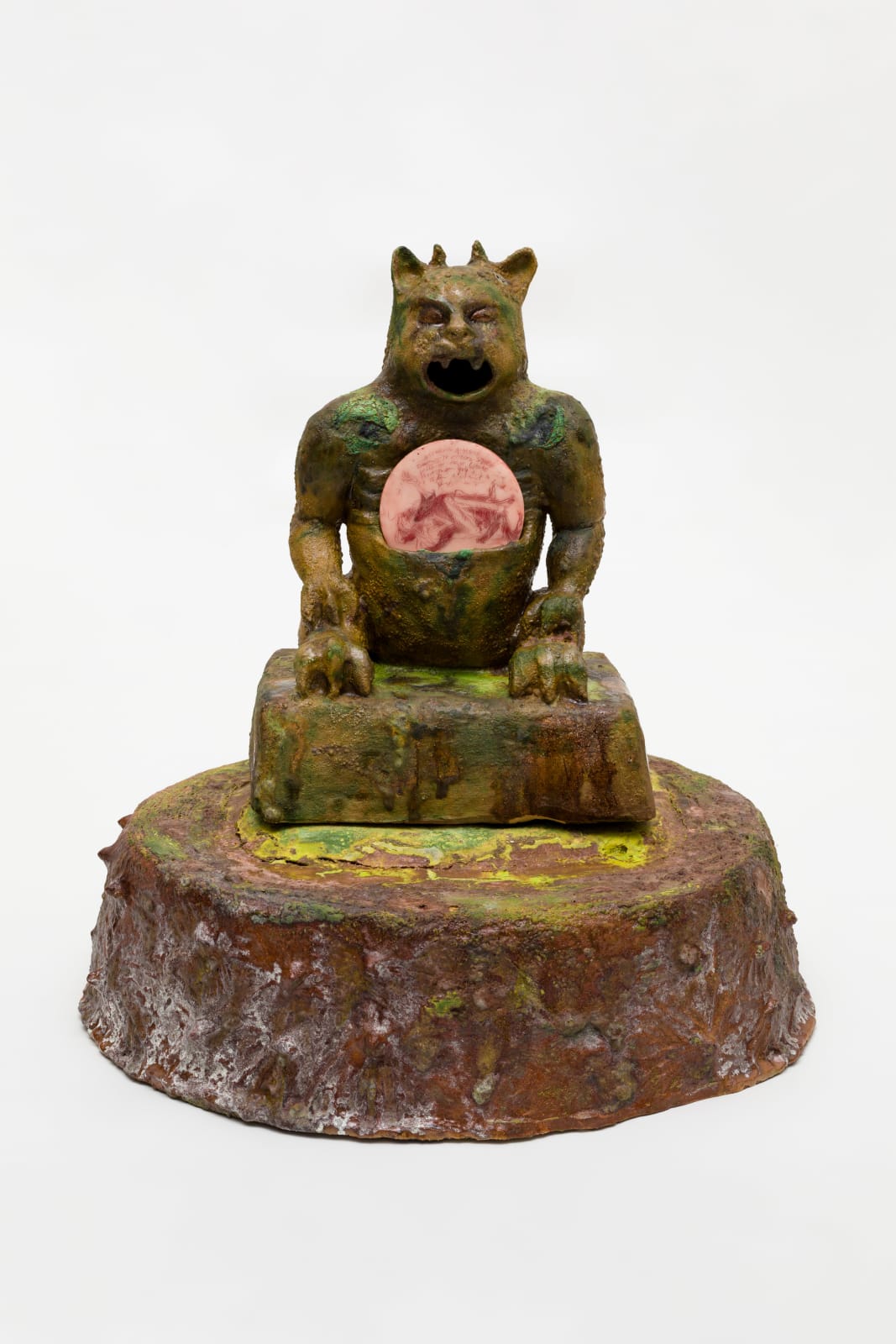Candice Lin
Taboo Demon, 2023
ceramic with lithium glaze, wax, cooper, oil paint
cerâmica com esmalte de lítio, cera, cobre, tinta a óleo
cerâmica com esmalte de lítio, cera, cobre, tinta a óleo
54.5 x 41.5 x 44 cm
21 1/2 x 16 3/8 x 17 3/8 in
21 1/2 x 16 3/8 x 17 3/8 in
As an extension From the Lithium Sex Demons in the Factory, co-produced and commissioned by Canal Projects and the 14th Gwangju Biennale, glazed ceramics juxtaposes a complex narrative of queer...
As an extension From the Lithium Sex Demons in the Factory, co-produced and commissioned by Canal Projects and the 14th Gwangju Biennale, glazed ceramics juxtaposes a complex narrative of queer love, toxicity, and labor.
The ceramic sculptures narrates the fictional lives of the lithium sex demons. Developed from a short text written by the artist, the series tell the story of a sex demon’s quest to return from the dead to their lover in a lithium battery factory.
The story of the sex demon is a fiction that draws from various Asian myths and ghost lore, such as the Chinese hungry ghosts (èguǐ), Japanese shit-eating ghosts (gaki), and Malay penanggal that feast on menstrual blood. The demonic possession of factory workers has a basis in reality, as documented by the scholar Aihwa Ong. In Lin’s work, however, these testimonies of toxicity become entwined with a story of bodily desire in the spiritual world creating multiple layers around labor politics, queer love, and the materiality of our contemporary world.
The ceramic sculptures narrates the fictional lives of the lithium sex demons. Developed from a short text written by the artist, the series tell the story of a sex demon’s quest to return from the dead to their lover in a lithium battery factory.
The story of the sex demon is a fiction that draws from various Asian myths and ghost lore, such as the Chinese hungry ghosts (èguǐ), Japanese shit-eating ghosts (gaki), and Malay penanggal that feast on menstrual blood. The demonic possession of factory workers has a basis in reality, as documented by the scholar Aihwa Ong. In Lin’s work, however, these testimonies of toxicity become entwined with a story of bodily desire in the spiritual world creating multiple layers around labor politics, queer love, and the materiality of our contemporary world.
